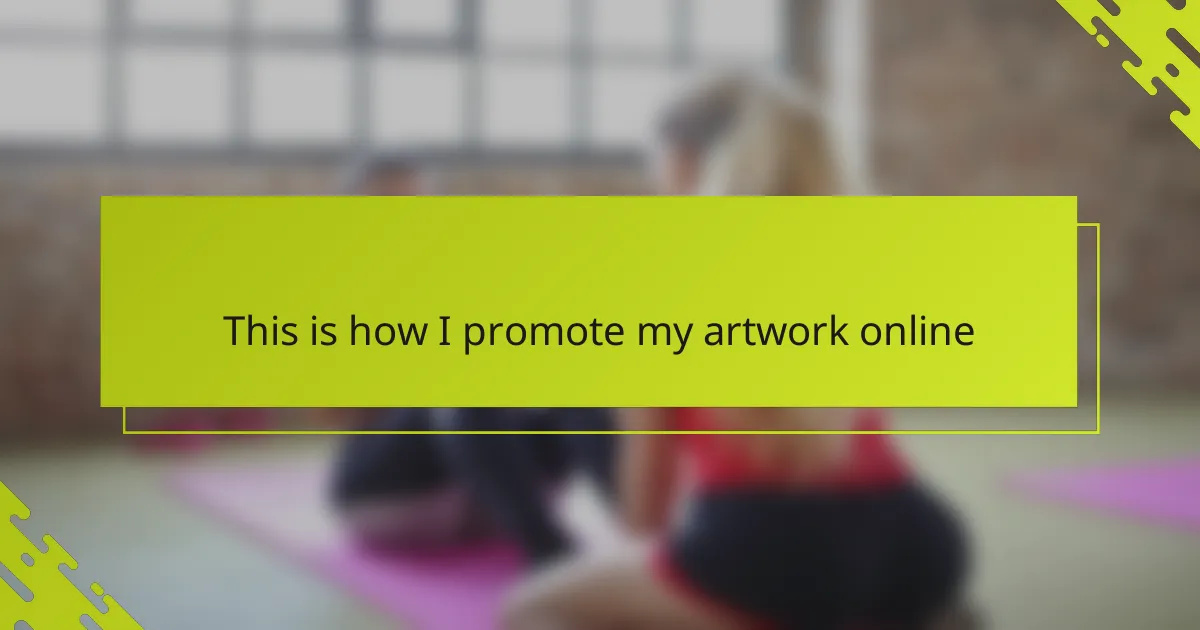Key takeaways
- Queer women culture online fosters a sense of belonging and community through shared experiences, art, and expression.
- Art promotion within this community serves as a form of activism, creating connection and dismantling feelings of isolation.
- Building an authentic artist identity involves embracing vulnerability, which invites deeper connections with audiences.
- Effective strategies for promoting artwork include consistency, storytelling, and collaboration with other artists for enriched engagement.
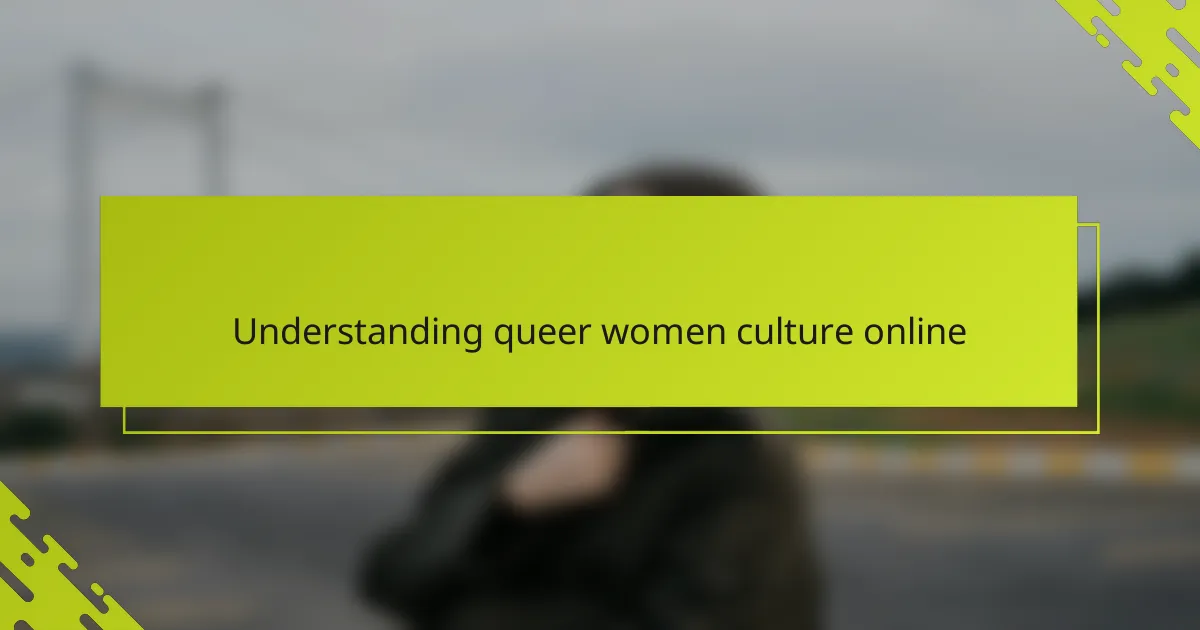
Understanding queer women culture online
Queer women culture online is a vibrant, ever-evolving space where identity, expression, and community intersect. From my experience, it’s not just about visibility but about creating a sense of belonging in a world that often feels fragmented. Have you ever noticed how sharing your art within this culture feels like more than just exposure? It’s a dialogue—a way to connect, resist, and celebrate all at once.
Navigating this online world means tuning into its nuances: the language, the symbols, the shared histories that might not be obvious at first glance. When I first started sharing my work, I had to learn to listen carefully and observe how queer women support and uplift each other, often in subtle yet powerful ways. It taught me that promoting artwork here isn’t just self-promotion; it’s participation in a collective narrative.
What struck me most is how the online queer women culture blends personal vulnerability with fierce pride. This mix creates a unique space where art isn’t just appreciated—it’s understood on a deeper level. That understanding makes all the difference when you’re putting your work out there. Have you ever thought about how your audience’s identity shapes the way they receive your art? In this culture, that connection feels especially strong.

Importance of art promotion within the community
Art promotion within the queer women community isn’t merely about getting eyes on your work—it’s about anchoring your voice in a shared experience. I’ve found that when I actively promote my art here, it feels like I’m weaving my story into a larger tapestry, one where every thread matters. Doesn’t it feel empowering to know your creativity can resonate and ripple through a community that truly gets it?
From my perspective, promoting art in this space helps dismantle isolation. When I see others sharing their creations, it reminds me—and them—that we’re not alone in our journeys. This mutual uplift turns promotion into a form of activism, where visibility fosters not just recognition but healing and connection.
I often ask myself, what makes promotion within this community so vital compared to other spaces? For me, it’s the deep emotional exchange it sparks. Each like, share, or comment isn’t just validation; it’s a conversation filled with understanding, pride, and sometimes even defiance against a world that often overlooks us. That’s why promoting my art here feels like more than marketing—it feels like home.
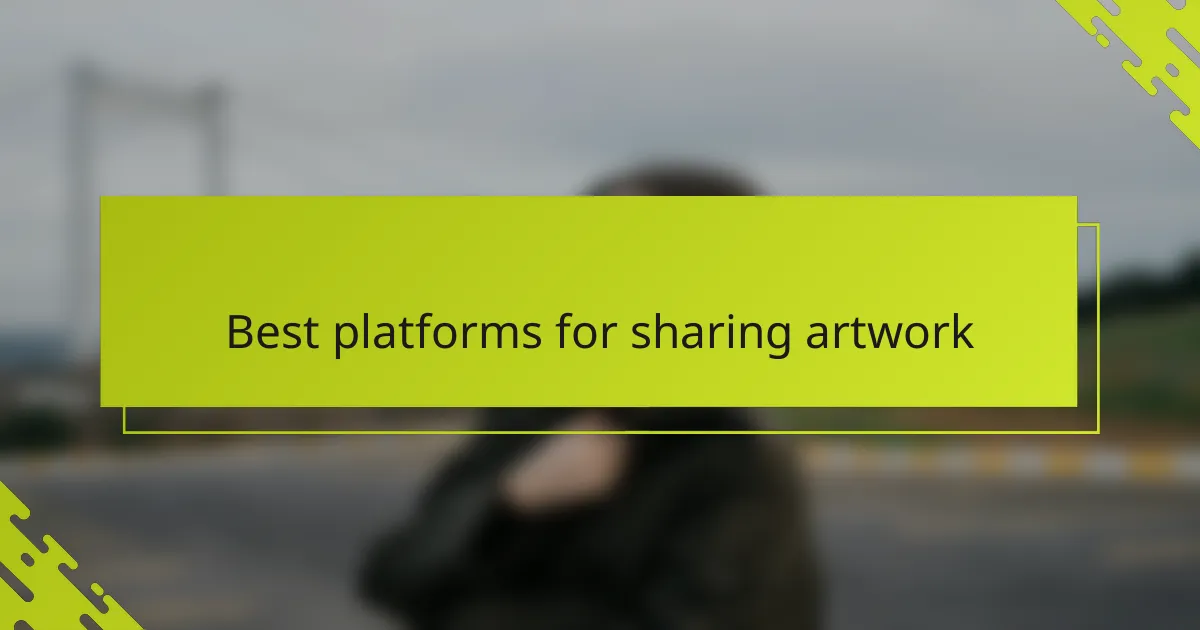
Best platforms for sharing artwork
When I first started sharing my artwork, Instagram quickly became my go-to spot. Its visual nature makes it perfect for showcasing pieces, but what really hooked me was the way hashtags and communities within Instagram create pockets where queer women’s voices and stories resonate deeply. Have you noticed how a single comment from someone who “gets” your work can light up your entire day?
Tumblr holds a special place in my heart too—it’s where I found a thriving, niche community that embraces queer aesthetics and narratives in all their rawness. The platform’s reblog feature feels like a ripple effect, amplifying voices that might otherwise stay quiet. From my experience, posting here feels less like broadcasting and more like sharing within a trusted circle.
Of course, I’ve also leaned into smaller, specialized platforms like DeviantArt, especially when I want to connect with other artists and get detailed feedback. It’s a more traditional space but still valuable for honing my craft and finding mentors. Have you ever tried mixing these platforms to see which vibe fits your art and story best? I’ve found that juggling them keeps my promotion both dynamic and authentic.
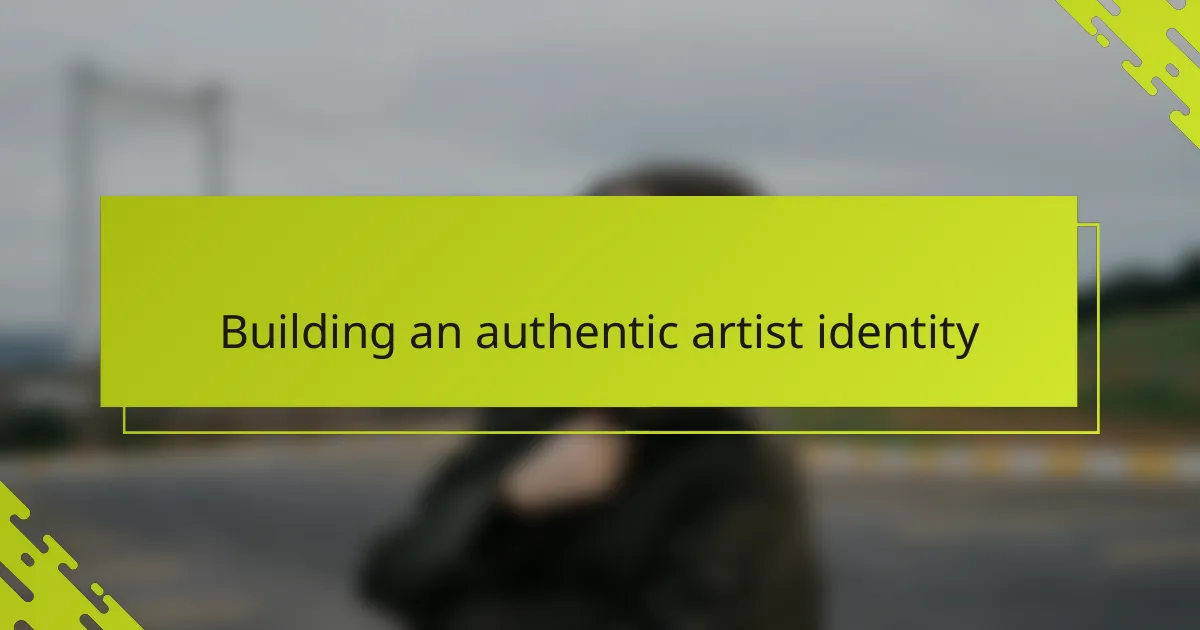
Building an authentic artist identity
Crafting an authentic artist identity felt like untangling layers of who I truly am beyond the canvas. How often do we shy away from our full selves in fear of not fitting in? Embracing my queer womanhood openly in my art allowed me to create work that felt genuine and magnetic, drawing in people who didn’t just view my pieces but saw parts of their own stories reflected back.
I’ve noticed that authenticity isn’t just about the art itself but how I present it—my bio, my tone, even the stories I share alongside my work all add depth to my identity. When I lean into vulnerability, it sparks connection because it’s real, not polished or performative. Does your artist identity invite others in or keep them at a distance?
What surprised me the most was how building this identity is an ongoing process. It’s easy to get stuck trying to fit into expected molds, but I’ve learned that staying true to my evolving self fosters a sense of trust with my audience. They appreciate seeing the layers and growth, because authenticity thrives in honesty, not perfection.
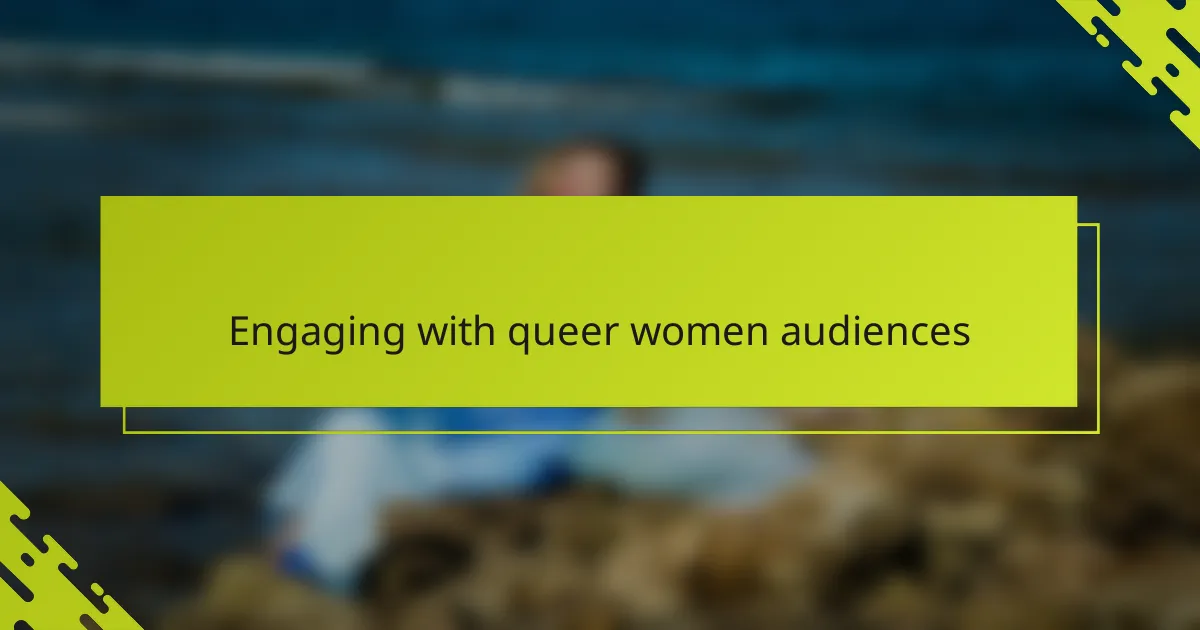
Engaging with queer women audiences
Connecting with queer women audiences online has meant more to me than just targeting a demographic—it’s about honoring shared experiences. I remember the first time someone from the community commented on my work with such empathy; it felt like a quiet nod of recognition that went straight to my heart. Have you ever felt that moment when your art speaks directly to someone else’s story? That’s the kind of engagement I aim for.
I’ve found that responding to comments and participating in conversations around identity, politics, and art within queer women circles creates a dynamic exchange. It’s not enough to post and wait—being present and showing up consistently turns my followers into a supportive community. Doesn’t it feel more rewarding when engagement is a two-way street rather than a broadcast?
Sometimes, I share behind-the-scenes glimpses or personal reflections that might seem vulnerable but invite connection. Those moments often spark the richest discussions and remind me why this audience matters so deeply. Have you noticed how authenticity in engagement creates bonds that last far beyond likes or shares? For me, it’s that trust that keeps the dialogue alive and growing.
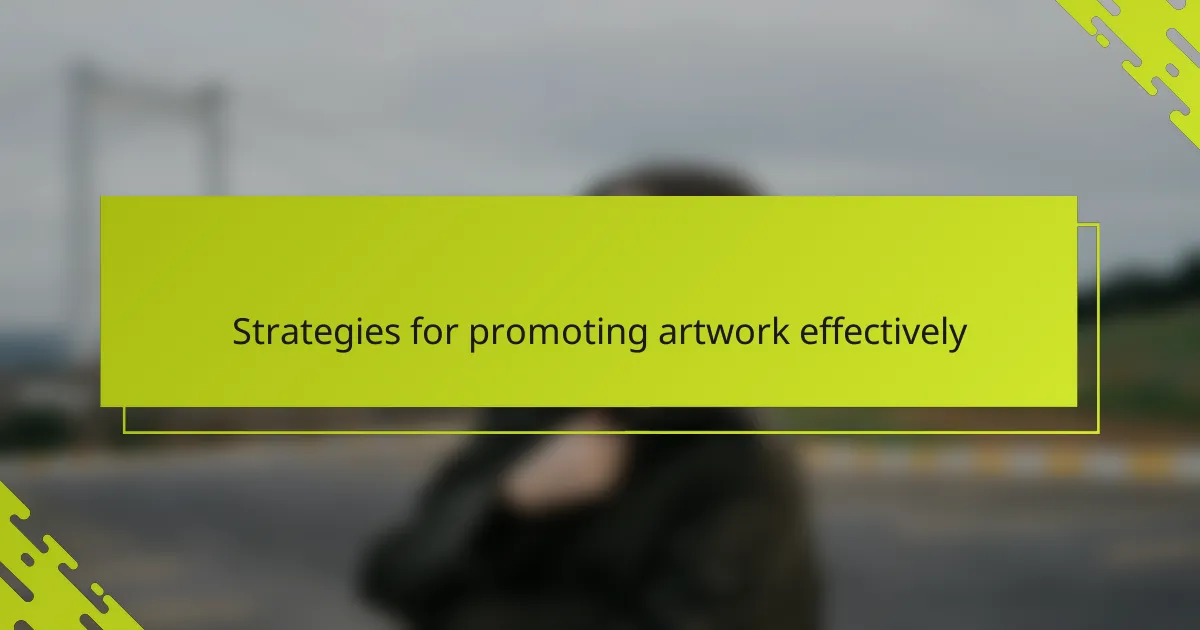
Strategies for promoting artwork effectively
One approach I swear by is consistency—it’s like tending a garden. Posting regularly, even if it’s just small updates, keeps my audience connected and eager to see what’s next. Have you ever experienced how a steady presence builds trust more than sporadic bursts of activity? From what I’ve seen, it turns casual viewers into genuine supporters.
Another strategy is storytelling. I discovered that sharing the stories behind my pieces—why I created them, the emotions involved—opens doors to deeper understanding. When I describe what a particular symbol or color means to me as a queer woman, it invites others into my world. Doesn’t that kind of context make your art feel alive, not just seen?
Finally, collaboration has been a game-changer. Partnering with other queer women artists or community members not only broadens my reach but also enriches my perspective. I’ve noticed how joint projects spark fresh creativity and amplify our voices together. Have you tried teaming up with others to promote your art and discovered new energy in the process?
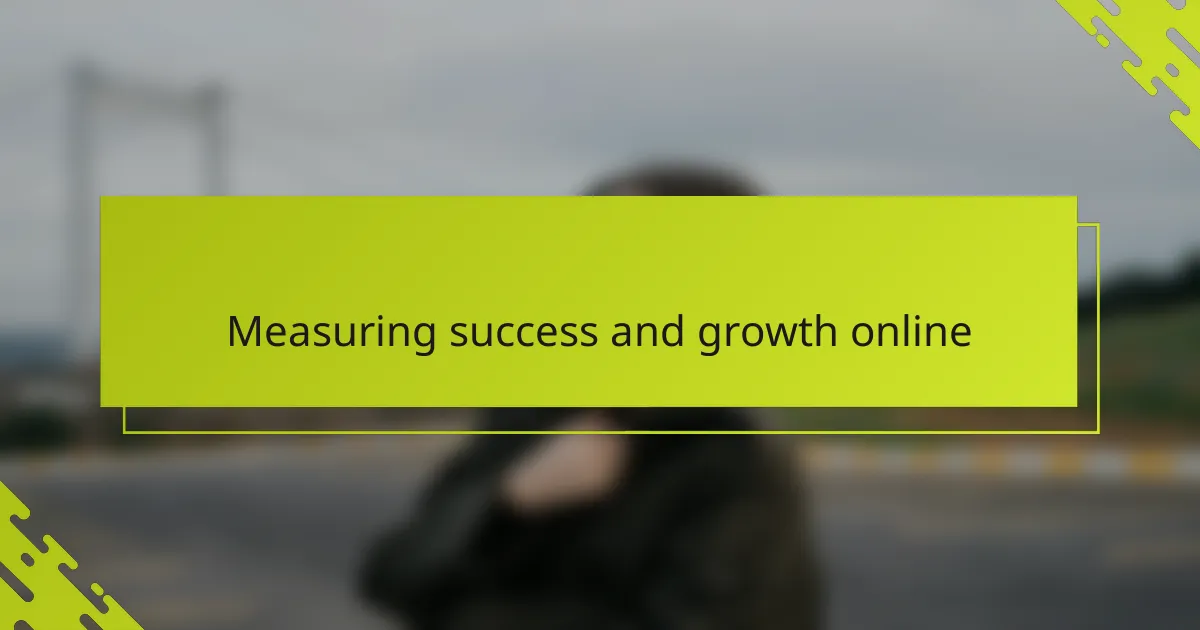
Measuring success and growth online
Measuring success and growth online sometimes feels tricky—how do you really know if your art is making an impact beyond the numbers? For me, it’s not just about follower counts or likes but the quality of interactions that reveal real connection. Have you ever noticed how a heartfelt comment or a message from someone saying your work resonated with their experience feels way more meaningful than any metric?
I’ve learned to track patterns in engagement, like which posts spark conversations or get shared within queer women networks. Those moments signal growth in community, not just visibility. It’s like planting seeds—you might not see a forest overnight, but the roots are definitely spreading beneath the surface.
Also, reflecting on my own creative progress helps me gauge growth beyond online stats. When I look back at earlier pieces and see how my style or voice has deepened, I feel a personal kind of success that no number can capture. Doesn’t that kind of internal measure sometimes matter more than external affirmation?
